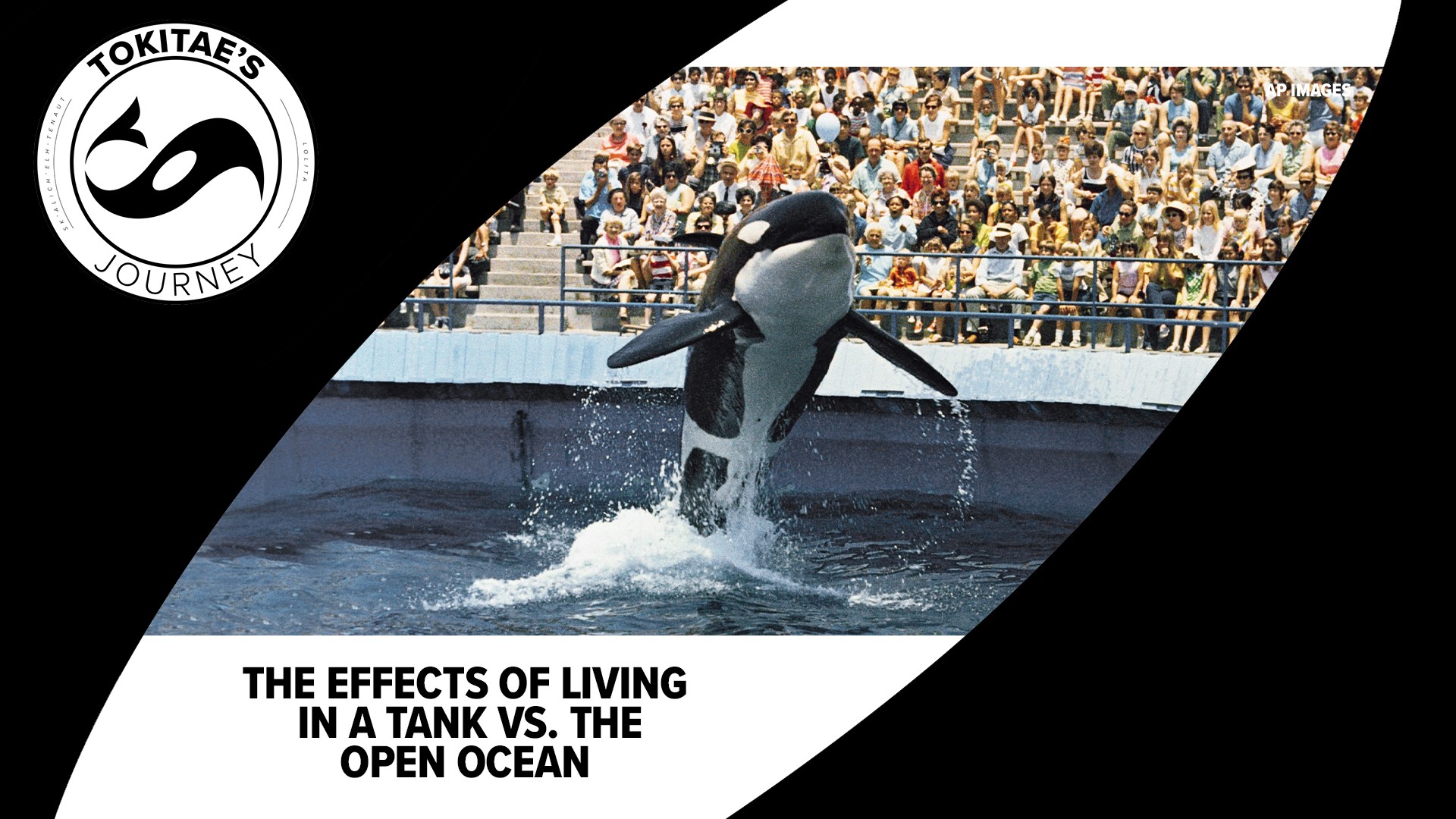NOVA SCOTIA, Canada — Part of the push to return Tokitae from the Miami Seaquarium to her native waters came due to concerns about her mental and emotional health.
Tokitae was taken from Puget Sound in the 1970s when she was around four years old and has spent the last 53 years in captivity at the Miami Seaquarium where she performed under the name Lolita. She is known to the Lummi nation as Sk’aliCh’elh’tenaut.
While the size and environmental differences between marine tanks and the ocean are obvious, researchers say there are also contrasts in social interaction and daily stressors that impact the sophisticated brains of marine mammals.
Dr. Lori Marino is a neuroscientist with decades of experience studying whale and dolphin brains and intelligence.
"When you look at their brain you realize it has a number of characteristics that are even more elaborated than the human brain, and when you look at their behavior in the field and what they do in their everyday lives you see a lot of complexity there," Marino said.
She points to many of the characteristics that Pacific Northwest residents are familiar with from following the movements of groups such as Southern Resident orca pods, including social complexity, emotional bonding and culture.
"Orcas, for instance, live their whole lives in family groups, they live in pods," Marino said. "Some of the males, for instance, stay with their moms their whole lives, they're the absolute mama's boys, and they are matrilineal, they are cultural meaning each group of orcas has a different dialect, they do things differently, they eat different things, they have social relations that reflect their specific culture."
Marino says their brains crave and need these interactions and stimuli. In marine parks, she says, they lack autonomy and face repeated stressors that impede proper development and can cause aggressive activity they would not perform in the wild.
"What happens to dolphins and whales in tanks is what happens to any animal, any species, who is placed in an impoverished environment," Marino said. "And that is that they cannot thrive, and there's actual documented evidence that when you place any type of animal in an impoverished environment, their brain is harmed."
While advocates don't want whales in tanks, they say many of them are likely not ready to survive in a fully natural environment. That's why the nonprofit Whale Sanctuary Project hopes to create a hybrid space for them, combining their life along the seafloor with care and food from humans.
"The sanctuary is an off-ramp for dolphin and whale captivity- and it's needed because those individual whales who were born into the tanks don't have the skills to survive, they are fed dead fish, and they don't know what prey is," Marino said. "Not only that, they don't have a group to go back to, a family group, or a social group to go back to, and family and social group is everything to dolphins and whales. And if they don't have that to go back to, it is just too risky."
While she says an ideal world has no marine mammals going into captivity to begin with, she is hopeful that sanctuaries can provide the best of both worlds for those already impacted by the system.

